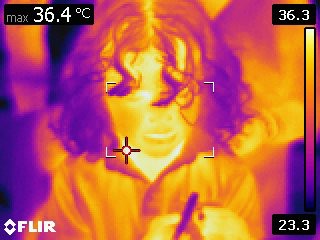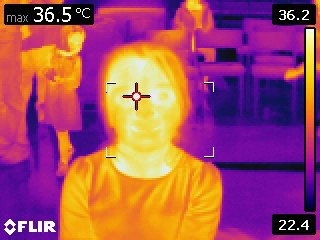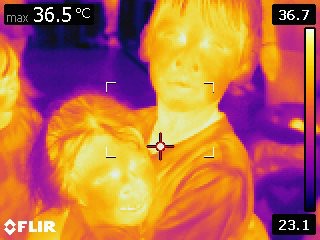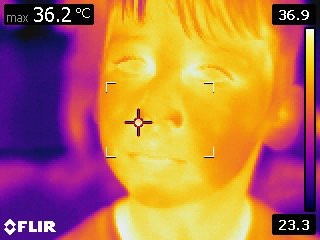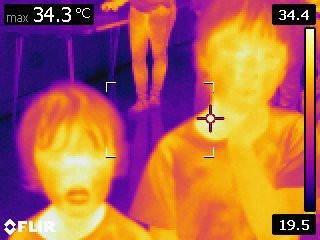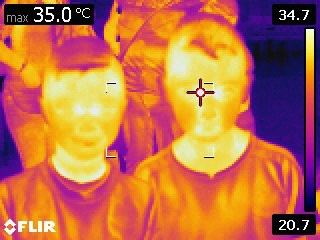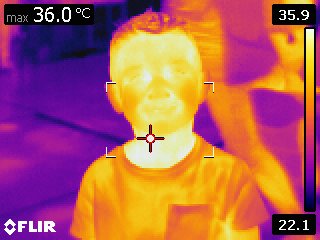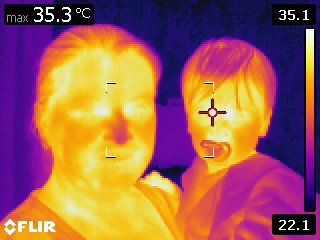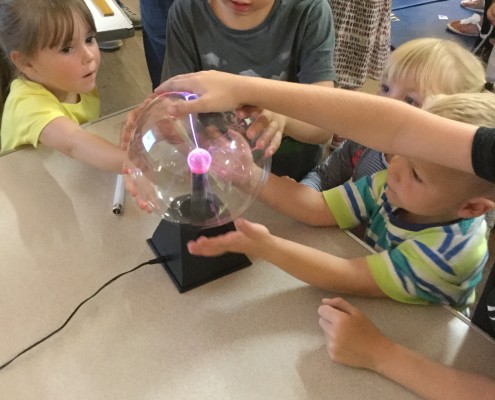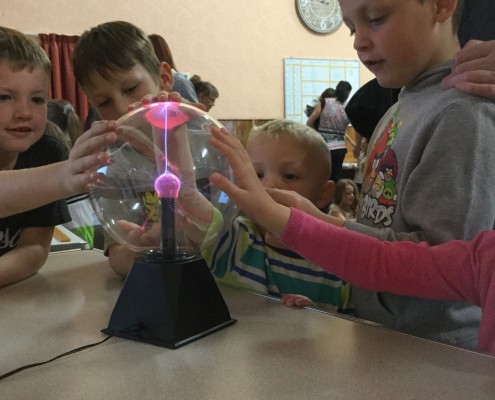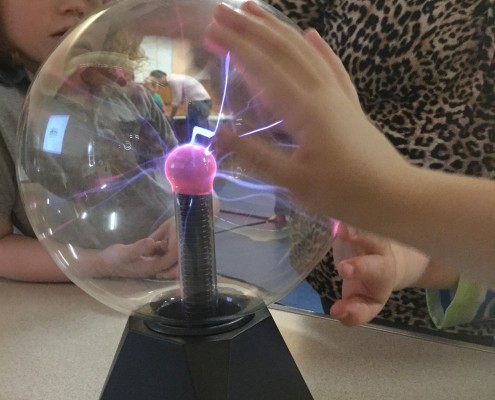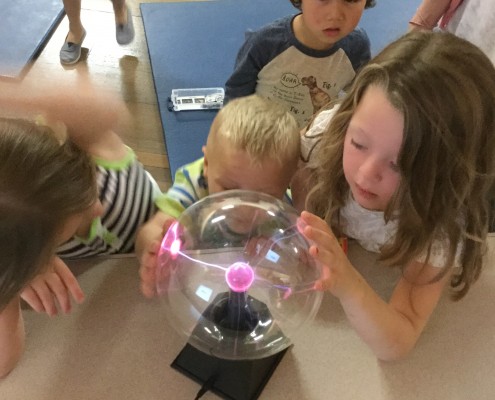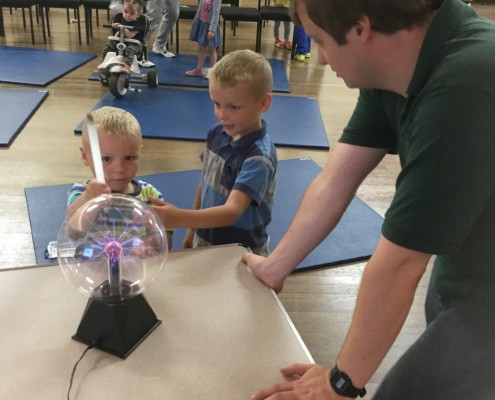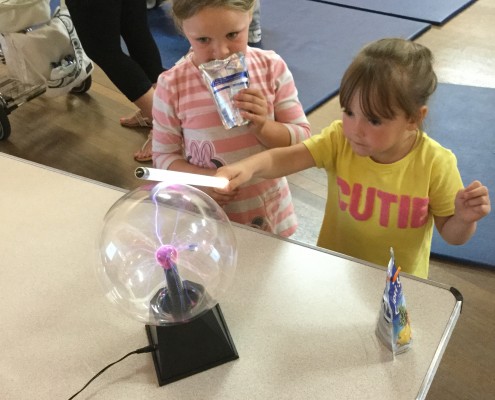Science Communication MSc
/0 Comments/in News/by JonathanThink Physics is based at Northumbria University, where it just so happens we run a Science Communication MSc course as a joint endeavour with the Centre for Life (who are also a Think Physics partner – are you spotting a pattern here?).
There are several such courses in the country, notably the ones run by Imperial College and the University of the West of England. The Northumbria course differs primarily in the close association with a leading visitor centre: if you look closely at the range of courses available, you’ll see that each skews towards a different niche and specialism.
The course is currently recruiting for its second entry cohort, either for full-time study over one year or part-time over two. Useful links:
- A handy blog post from existing MSc student Jaclyn Laird, reflecting on the first year of the course.
- Northumbria University’s page for the course.
- Life’s page for the course.
Register your school for BBC micro:bit
/0 Comments/in News/by JonathanConfused by Raspberry Pi and Arduino (not to mention Espruino, Beagleboard, Edison, and all the rest)? Don’t despair, things are about to get even more convoluted!
The BBC are introducing a whole new platform to the education mix, with their micro:bit available to every year 7 child in the UK. The board itself is the centrepiece of a whole education initiative, “Make It Digital”, which aims to build on the legacy of the original 1980s BBC Computer Literacy Project, which itself spawned the original BBC Micro. So, surrounding the new board will be a whole ecosystem of learning materials and projects. There’s also a rather interesting web-based programming tool, built on Microsoft’s TouchDevelop, which looks like it might neatly bridge the gap between popular introductory tools like Scratch and follow-on approaches like Python and Arduino’s C environment.
Arguments about whether the BBC should have gone this route are largely moot at this point – as a publicly-funded body it’s hard for them to be seen to back any commercial product, even if it’s wholly open (Arduino) or sort-of commercial but warm and cuddly (Raspberry Pi). Besides, the array of Make It Digital project partners is huge.
So micro:bit is coming, and hopefully bringing with it a vast array of high-quality resource material. And best of all, it’s all free. Or at least, one micro:bit per year 7 student will be – the rest of us will have to buy the things, but that’s still a great start.
Register your school now to receive micro:bits for your 2015 year 7 group, via this web form.
No, really: if you’re responsible for ICT in your school, fill the form in. Micro:bit might turn out to be a distraction, but there’s a decent chance it’ll be a superb platform and ecosystem for investigations and embedded projects. I’ll be trying to get my hands on a few micro:bits when they become more widely available, and I look forward to building things with them via Think Club.
Additional links:
- Design company Technology Will Save Us have a lovely page introducing the micro:bit and some of its potential. Well worth scrolling through.
- Tech specs for the board, which includes some interesting features. It’s a relatively powerful beast, includes Bluetooth as well as USB, and has neat additions like a grid of LEDs, accelerometer, compass, and buttons all built-in.
- Early project prototype from well-known supplier Kitronik: a micro:bit buggy. Note the board attached to the buggy via an edge connector, which is a cunning design feature.
- The BBC’s development blog, detailing the prototype history of the board.
- Element 14 tell the story of their part in turning the prototypes into manufactured products.
Pelton Community Centre
/0 Comments/in News/by Joe ShimwellIt’s been a busy afternoon at Pelton Community Centre – we’ve been exploring the universe!
We’ve played with plasma, indulged in a little infra-red photography and charged ourselves with the Van de Graaff generator. Take a look at the galleries below if you want to see some of the photos!
If you’re interested in finding out a little bit more about the Explore Your Universe science show, you can visit our page here.
Degree Apprentice Software Engineer Opportunity
/0 Comments/in Careers, News/by EmmaCompleted your Post-16 qualifications and thinking what next? Why not consider this fantastic opportunity with the HMRC, Newcastle upon Tyne. Under the direction of product managers, scrum masters and technical leads, you’ll work with software developer colleagues to build, develop, test and deploy digital services for our users. This diverse role means you will gain experience in working in a fast paced agile/scrum development environment; as well as gaining experience in developing digital and web solutions.
There are 15 vacancies, you will be paid a starting salary of £23,367 a year, and study towards a BSc (Hons) in Digital and Technology Solutions at Northumbria University!
Sound good? For more information click here
The Great North East Space Expo
/0 Comments/in News/by CarolOn 22nd June, Think Physics and Northumbria University sponsored and exhibited at the Great North East Space Expo. This event was organised by the Ashington Learning Partnership, and held at the Discovery Museum. It was a really good event, with over 390 students coming along to learn about space and careers in the space sector.
Some of the students from ALP have produced a video giving a taste of what went on.
Untidying the lab
/0 Comments/in News/by JonathanAs the centre of all things Think Physics (other than the coffee machine), Think Lab can get a little… let’s just say busy. Recently, however, organisational salvation has arrived in the form of a gigantic pair of Gratnells cupboards.
For a while we mostly stared at them in awe, but the delivery of a vast shipment of lab equipment – seriously, a fork-lift was involved – forced our hand. Today, then, was The Grand Sorting Out of the Lab Day.
Inevitably, the day has mostly looked like this:
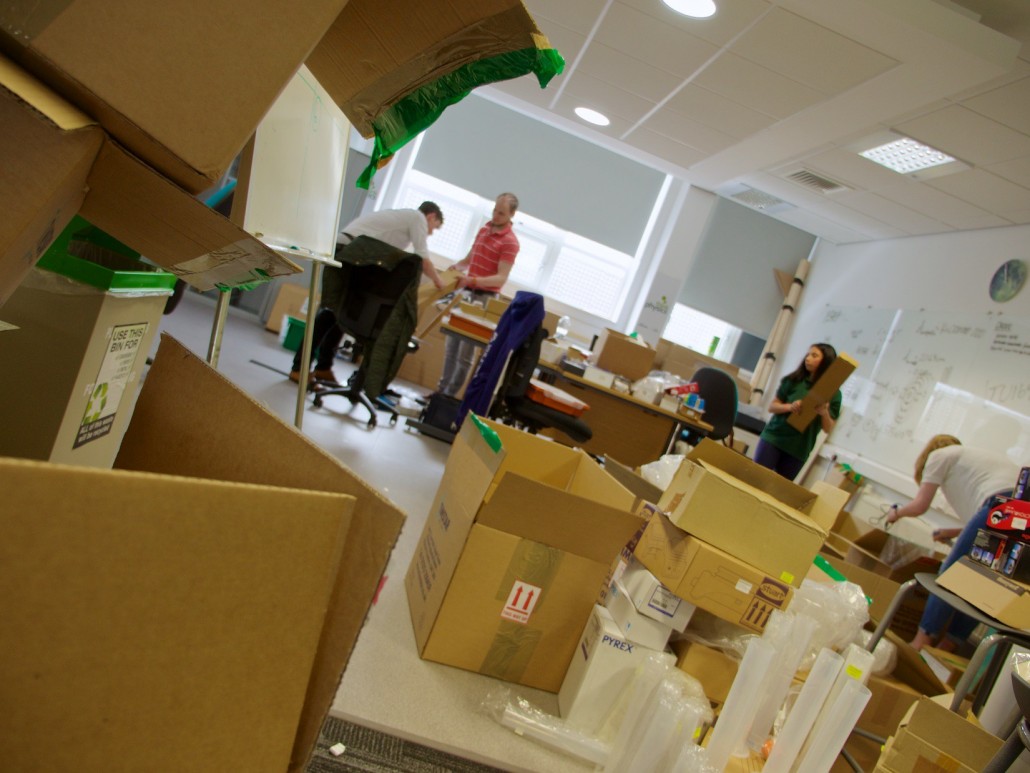
Indeed, by the end of the day the lab could charitably be described as a work in progress. We’ll get there, however. Just as soon as we find another roll of tape for the labelling machine…
8 Minutes 20 Seconds Exhibition
/0 Comments/in News/by Annie PadwickThink Physics joined forces with The Holy Biscuit gallery on 15th and 16th of May to contribute to another action-packed NewcastleGateshead Late Shows. This collaboration was in honour of the International Year of Light and a timely addition to Northumbria University’s UKMHD Conference this May.
The result of the collaboration was 8 Minutes 20 Seconds, an exhibition presenting an artistic interpretation of the science behind the sun. The 8 Minutes 20 Seconds refers to the time it takes for light from the Sun to reach the earth.
The exhibition featured Helen Schell’s large scale optical illusions exploring the solar eclipse and John Jo Murray’s scientific sculpture, exploring how light can create subtle changes in colour and reflections. Sarah Davis’ work explored our understanding of the world from the prehistoric era through to the present through bold motifs and colours to chart the Earth’s development and relationship to the sun. While, Emily Simpson looked at how camera filters process light differently from the human eye, exploring the impact of the sun on technology.
This slideshow requires JavaScript.
The exhibition was interspersed with interactive science exhibits and texts curated by Think Physics and Northumbria University MSc Science Communications students Jacalyn Laird, Jane Shearer and Lucy Mace, who focused on how the sun creates light and how we interact with it. During the Late Shows the students guided visitors round the interactive elements of the exhibition ensuring the scientific content of the exhibition was accurate and engaging. The exhibition was enhanced by a number of events, including an opening for members of the UKMHD Conference, an Art & Science discussion evening and a visit from St Catherine’s Primary School.
All photos by A Baker Photos.
This slideshow requires JavaScript.
The show has received over 1000 visitors and had some fantastic feedback from visitors:
“Fantastic! Great ideas linking art and science with some beautiful artwork and interactive exhibits”
“Informative, interesting, enjoyable. Thank you”
“Creativity and excellence – with great, clever and interactive displays.
You can read more about the Think Physics and Holy Biscuit collaboration in NARC Magazine.
#girlswithtoys
/0 Comments/in News/by JonathanYesterday, National Public Radio in the US published an interview with an astronomer, in which he’s quoted saying:
“Many scientists, I think, secretly are what I call ‘boys with toys’.”
Many other scientists are, of course, not boys at all. But they still have toys, and for the last eleven hours or so Twitter has been awash with fantastic photos of scientists, grouped under #girlswithtoys. There are lots of telescopes:
Me and my telescope #girlswithtoys pic.twitter.com/Yds9iHgeOF
— Karen James ❄️ (@kejames) May 17, 2015
Using this 14” on the roof of the old astro building at Caltech, we found methane storms on Titan. #girlswithtoys pic.twitter.com/qijKddal4z
— Dr./Prof. Sarah Hörst (@PlanetDr) May 16, 2015
With my own-made muon-telescope @sheffielduni #girlswithtoys pic.twitter.com/0n1ROs4w9U
— Dr Marieke Navin (@mariekenavin) May 17, 2015
…there are plenty of other bits of apparatus and equipment:
#GirlsWithToys Me at JPL with the engineering twin of the @MarsCuriosity rover, which I help drive on Mars pic.twitter.com/qgCu17m3sC
— Dawn Sumner (@sumnerd) May 17, 2015
#Geophysics: break your toys, fix your toys. #GirlsWithToys Protip: Always pack electrical tape & a hair dryer. pic.twitter.com/GeBSer9NNz
— Mika McKinnon (@mikamckinnon) May 16, 2015
In mass spec lab now reading the #girlswithtoys stream. This awesome toy is a thermal ionization mass spectrometer! pic.twitter.com/bGF8T7pbz5
— Rita Parai (@HeNeArXe) May 16, 2015
My beloved dual intracellular amp from Friday Harbor Days-Girls are scientists and play with toys too! #Girlswithtoys pic.twitter.com/SDKD8inmqi
— Ms. Allie (@AllieTeachesSci) May 16, 2015
I have no idea what a dual intracellular amp is, but it’s clearly making someone happy.
Then there are the not-really-instruments-just-cool-toys:
And apart from astronomy…me with one of my favorite toys, my @Cessna #girlswithtoys pic.twitter.com/Eo038sestY
— Amber Straughn (@astraughnomer) May 17, 2015
Drop whatever you’re doing and spend a few minutes scrolling through the #girlswithtoys stream (see also the live feed). It’s a glorious depiction of scientists doing what they love, with the tools and instruments of their work.
(top image from this tweet – who doesn’t love a spot of Antarctic heli-fishing?)
Update, 11am: One of the most remarkable photographs is this:
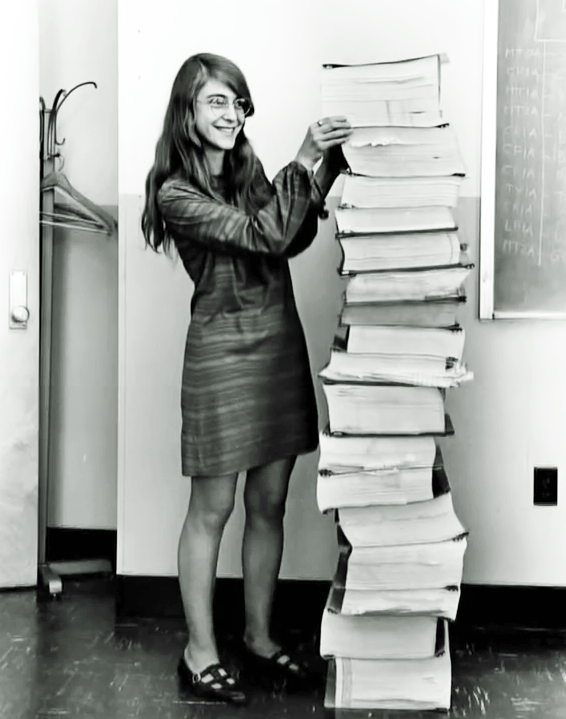
Margaret Hamilton during the Apollo Program (NASA / WikiMedia Commons)
I’d never heard of Margaret Hamilton, which seems outrageous given that she was the lead flight software engineer on the Apollo programme. That is: the code written by her team landed men on the moon. In the final moments before touchdown, the Apollo 11 Lunar Module computer was swamped with excess data and pushed beyond its limits. It’s a fairly standard story in software engineering circles about how the development team anticipated such a situation and had built a system that could tolerate it. Their foresight avoided calamity.
I’ve read the story many times, but I’ve never heard it mentioned that Hamilton led that development group, nor that she coined the very term ‘software engineering.’ Her Wikipedia page is awesome.

